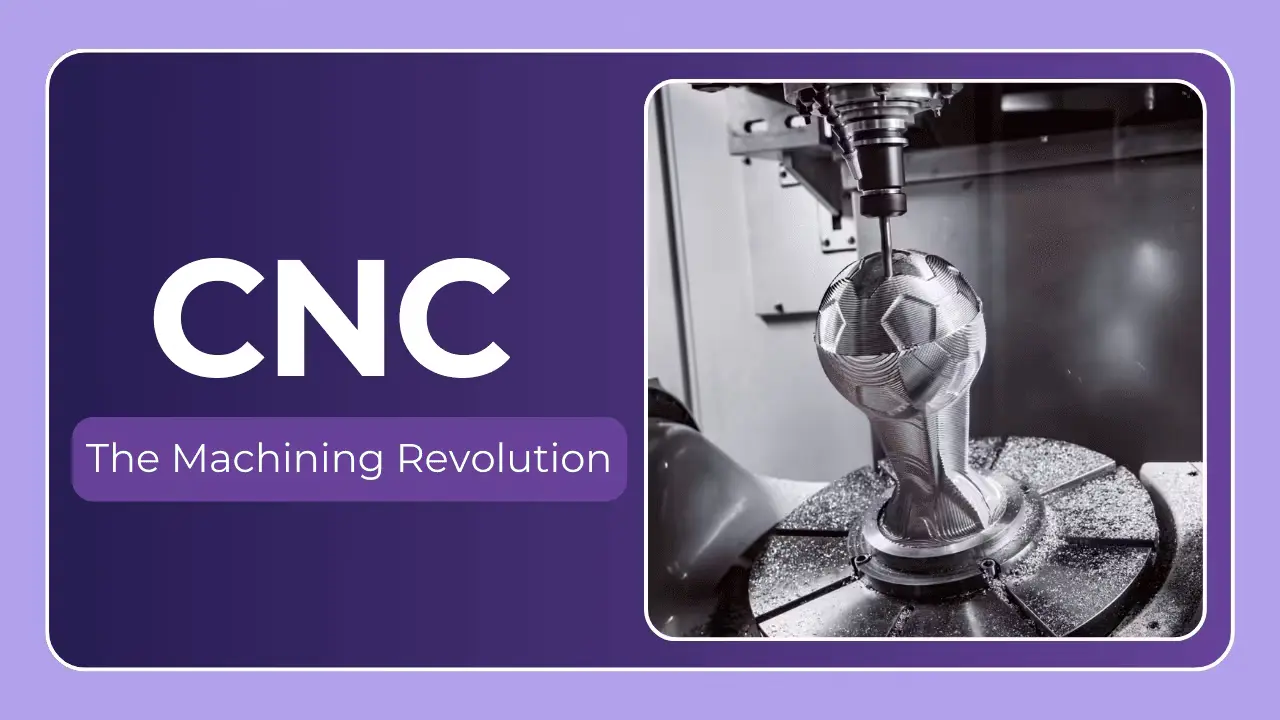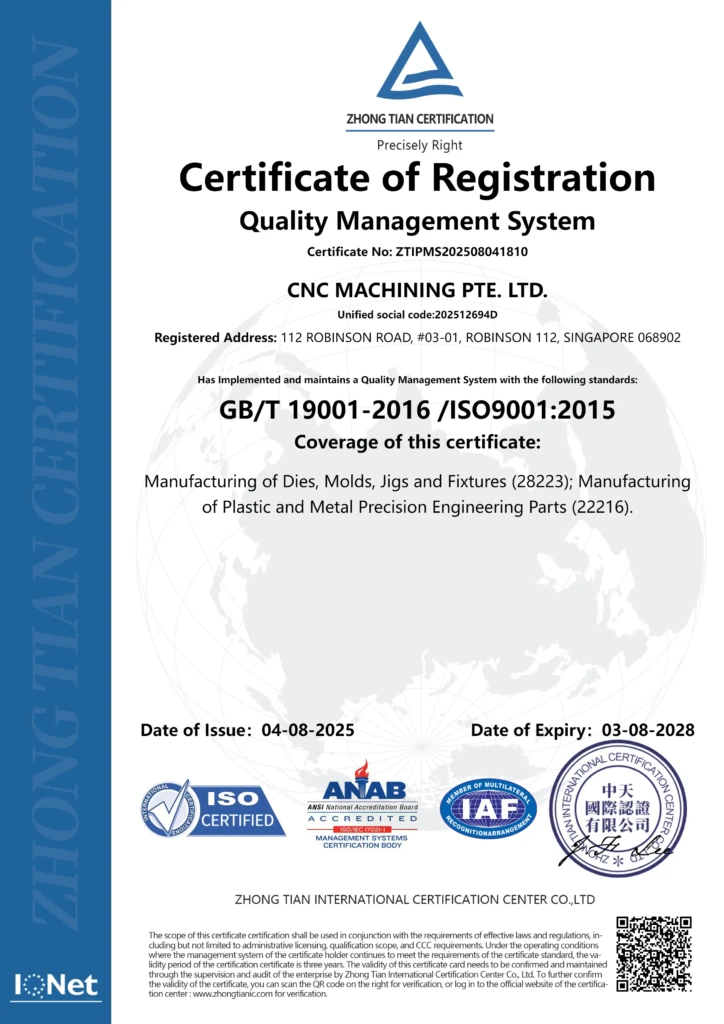What Does CNC Stand For in Machining? A Comprehensive Guide
In the realm of modern manufacturing, few technologies have revolutionized the industry as profoundly as CNC machining. But what exactly does CNC stand for, and why is it so crucial to precision engineering? This comprehensive guide will demystify the acronym, explore its evolution, and delve into the intricate world of Computer Numerical Control. Whether you’re a seasoned engineer, a curious hobbyist, or a business owner looking to leverage advanced manufacturing techniques, this article will equip you with the knowledge to understand and appreciate the power of CNC machining.
CNC Defined – Breaking Down the Acronym
CNC stands for Computer Numerical Control, a manufacturing process where pre-programmed computer software dictates the movement of factory tools and machinery. This technology enables precise control of complex equipment like lathes, mills, routers, and grinders, transforming raw materials into custom-designed parts with minimal human intervention.
At its core, CNC machining automates the control of machine tools through numerical data, allowing for the creation of intricate parts with unparalleled accuracy. This automation not only enhances precision but also significantly reduces the potential for human error, making it an indispensable tool in industries where exactitude is paramount.
The Evolution of CNC Technology
The journey of CNC technology is a testament to human ingenuity and the relentless pursuit of efficiency. Here’s how it has evolved over the decades:
- 1940s–1950s: The origins of CNC can be traced back to the aerospace industry, where the need for complex, high-precision parts led to the development of punch-tape systems. MIT’s Servomechanisms Lab played a pivotal role, creating the first numerically controlled milling machine in 1952.
- 1970s: The introduction of CAD (Computer-Aided Design) and CAM (Computer-Aided Manufacturing) software marked a significant leap. These tools allowed engineers to design parts digitally and generate the necessary code for CNC machines, streamlining the manufacturing process.
- 2000s: The integration of IoT (Internet of Things) and AI (Artificial Intelligence) brought about real-time adjustments and predictive maintenance, further enhancing the capabilities of CNC systems. Today, CNC machines can self-diagnose issues, optimize performance, and adapt to changing conditions.
This evolution has transformed CNC machining into a cornerstone of modern manufacturing, enabling the production of everything from aerospace components to medical devices with unprecedented precision.
Core Components of CNC Systems
Understanding CNC machining requires familiarity with its fundamental components:
- CAD Software: Engineers use tools like TurboCAD or SolidWorks to create detailed 3D models, specifying dimensions, tolerances, and materials.
- CAM Software: This converts the CAD model into G-code, a machine-readable language that includes instructions for tool paths, speeds, and feeds.
- Controller Unit: Acting as the brain of the system, the controller interprets G-code and converts it into electrical signals. Leading manufacturers like Fanuc and Siemens provide advanced controllers for precision and reliability.
- Drive System: Motors and actuators (servo or stepper motors) execute the precise movements dictated by the controller, achieving micron-level accuracy.
- Machine Tool: The physical equipment—such as mills, lathes, or routers—performs the cutting, drilling, or shaping of the material.
These components work together seamlessly to transform digital designs into tangible, high-precision parts.
How CNC Machining Works – Step by Step
The CNC machining process combines software, hardware, and skilled craftsmanship. Here’s a detailed breakdown:
- Design Creation: An engineer drafts the part geometry in CAD software, specifying tolerances as tight as ±0.005mm for critical applications.
- CAM Programming: Using software like Mastercam, the CAD model is converted into G-code, outlining tool selection, spindle speeds, and feed rates.
- Machine Setup: The chosen material (e.g., aluminum, titanium) is loaded, cutting tools are installed, and the machine is calibrated.
- Execution: The CNC machine follows the G-code instructions, with spindle speeds reaching up to 30,000 RPM for rapid, precise material removal.
- Post-Processing: Parts may undergo deburring, anodizing, or heat treatment to achieve the desired finish and properties.
This workflow ensures that even the most complex parts are produced efficiently and accurately.
Types of CNC Machines
CNC technology encompasses a variety of machines, each tailored to specific needs:
| Machine Type | Key Features | Common Uses |
|---|---|---|
| 3-Axis Mills | Moves along X, Y, and Z axes | Basic contours, drilling |
| 5-Axis Mills | Adds rotational axes (A and B) | Aerospace parts, molds |
| CNC Lathes | Rotates workpiece against tools | Shafts, bushings |
| Plasma Cutters | Uses ionized gas to cut metal | Metal art, frames |
| EDM Machines | Electrical discharges shape materials | Injection molds, micro-parts |
Each type offers unique capabilities, making CNC machining versatile across industries.
Advantages of CNC Over Manual Machining
The shift to CNC machining has brought transformative benefits:
- Precision: Achieves tolerances of ±0.001″ (0.025mm), surpassing manual capabilities.
- Repeatability: Produces thousands of identical parts with zero variance.
- Complexity: Enables intricate geometries like turbine blades, impossible with manual methods.
- Speed: Reduces production time by up to 80%, boosting throughput.
- Safety: Minimizes operator interaction, enhancing workplace safety.
These advantages make CNC the preferred choice for precision and efficiency.
Industries Transformed by CNC Machining
CNC machining has revolutionized numerous sectors:
- Aerospace: Boeing 787 wing ribs are crafted with 5-axis machining for lightweight strength.
- Medical: Titanium spinal implants are produced with Swiss-type CNC lathes for biocompatibility.
- Automotive: Tesla Model Y battery housings are milled from aluminum for optimal performance.
- Energy: Wind turbine gears are machined to withstand extreme conditions.
These examples highlight CNC’s critical role in advancing technology.
5-Axis CNC – The Pinnacle of Precision
5-axis machining represents the cutting edge of CNC technology:
- Simultaneous Machining: Tools move across five axes (X, Y, Z, A, B) in one setup.
- Applications: Automotive rims, aircraft engine housings, and orthopedic implants.
- Benefits: Reduces production time by 60% and human error by 95% for complex parts.
Great Light’s 5-axis machines exemplify this capability, delivering unmatched precision.
Common Materials Machined via CNC
CNC machining handles a wide range of materials:
- Metals:
- Aluminum 6061: Lightweight, corrosion-resistant.
- Stainless Steel 316: Strong, durable.
- Titanium Ti-6Al-4V: High strength-to-weight ratio.
- Plastics:
- PEEK: High-temperature durability.
- Ultem: Heat-resistant and insulating.
- Composites:
- Carbon Fiber (CFRP): Lightweight and strong.
Material selection is key to achieving desired performance.
Addressing Misconceptions About CNC
Common myths persist about CNC machining:
- Myth 1: “CNC is only for mass production.”
- Reality: Ideal for prototypes and small batches (1–100 units).
- Myth 2: “CNC eliminates jobs.”
- Reality: Creates high-skilled roles for programmers and engineers.
Dispelling these myths underscores CNC’s versatility.
The Future of CNC Machining
Emerging trends are shaping CNC’s future:
- AI Integration: Real-time parameter adjustments optimize performance.
- Hybrid Manufacturing: Combines 3D printing with CNC finishing.
- Sustainability: Energy-efficient systems reduce environmental impact.
These advancements ensure CNC remains at manufacturing’s forefront.
Why Choose Great Light for CNC Services?
Great Light offers unmatched expertise:
- Certifications: ISO 9001:2015, AS9100D (aerospace).
- Capabilities:
- 5-axis machining (4000×1500×600mm envelope).
- Mirror finishes (Ra 0.1μm).
- Hardened steel tooling (HRC 60+).
- Turnkey Solutions: Design to post-processing.
With 15+ years of experience, Great Light is your trusted CNC partner.
FAQ – CNC Basics
Q: What file formats do CNC machines use?
A: STEP, IGES, and STL, converted to G-code.
Q: How long does CNC programming take?
A: Simple parts: 1–2 hours; complex parts: up to 40 hours.
Q: Can CNC machines repair damaged parts?
A: Yes, via reverse engineering and 3D scanning.
Conclusion – CNC’s Role in Modern Manufacturing
CNC machining bridges innovation and precision, enabling industries to push design and efficiency boundaries. From replicating discontinued components to crafting cutting-edge prototypes, CNC remains the backbone of advanced manufacturing.
Explore Great Light’s CNC Expertise Today – [Request a Custom Quote]





